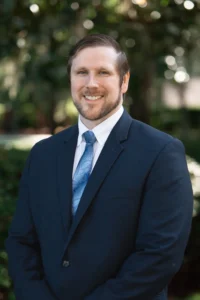
John Owen: Truly Reformed, Truly Scholastic
J ohn Owen (1616-1683), sometimes called “The Prince of Puritan Divines” is widely recognized as one of the greatest Reformed theologians ever to have lived. Owen’s works are valued for their theological depth and insight. Owen’s writings demonstrate both rigorous logic and profound eloquence, as he marshals a host of intellectual resources in the task of articulating the truths of the Christian faith. While Owen was very well connected politically and in public life, serving as vice-chancellor of Oxford under Oliver Cromwell from 1651 to 1657, it is the richness of his thought that brought him the most recognition and attention. [1] Carl Trueman notes, “Owen was without doubt the most significant theological intellect in the third quarter of the seventeenth century, and one of the two or three most impressive protestant theologians in Europe at the time.”[2] Owen’s profound theological insight brought him widespread recognition and a reputation for depth of thought which remains to this day.
ohn Owen (1616-1683), sometimes called “The Prince of Puritan Divines” is widely recognized as one of the greatest Reformed theologians ever to have lived. Owen’s works are valued for their theological depth and insight. Owen’s writings demonstrate both rigorous logic and profound eloquence, as he marshals a host of intellectual resources in the task of articulating the truths of the Christian faith. While Owen was very well connected politically and in public life, serving as vice-chancellor of Oxford under Oliver Cromwell from 1651 to 1657, it is the richness of his thought that brought him the most recognition and attention. [1] Carl Trueman notes, “Owen was without doubt the most significant theological intellect in the third quarter of the seventeenth century, and one of the two or three most impressive protestant theologians in Europe at the time.”[2] Owen’s profound theological insight brought him widespread recognition and a reputation for depth of thought which remains to this day.
Yet, Owen cannot be seen in isolation from the world of which he was part. Indeed, Owen is rightly seen as part of a broader movement of intellectual currents present in Western Europe at the time. It is these movements which are key to properly understanding Owen in his own intellectual development and context. Chief among these is scholasticism. John Owen may be rightly said to be a Protestant scholastic, in a very similar manner to other great theologians of the era, such as Francis Turretin (1623-1687) and Gisbertus Voetius (1589-1676). It is the purpose of this essay to explain Owen’s Protestant scholasticism and how it contributed to his articulation of classic Reformed theology.
Scholasticism
Scholasticism as a movement began in the Middle Ages as a method to teaching within the schools. It is from this that it receives its name. It was a movement of the schola, the school. As the great universities developed in Europe, they began to develop systematic methodological approaches to teaching theology, philosophy, and other subjects. At the heart of the scholastic method was the disputation, where magisters (teachers) and their students would engage in public debate over disputed points of teaching. The disputed points would be characterized in the form of a question. This method became known as the quaestio method.[3] This method was valued throughout the history of scholasticism. It can thus be seen in both the Summa Theologica of Thomas Aquinas in the thirteenth century and the Institutes of Elenctic Theology of Francis Turretin in the seventeenth century. Thus one of the core features of scholastic theology was its concern with working through questions of dispute and analyzing them exhaustively. One of the core features of scholastic theology was its concern with working through questions of dispute and analyzing them exhaustively. Share on X
There are several points to be made about scholasticism. First, scholasticism was a method. It was not a communication of specific content. A specific doctrine or teaching would not qualify as “scholastic.” Scholasticism is a reference to the approach to teaching and assessing the content of the discipline. It is an approach which was developed in the schools as a way of handling different types of content. As Richard Muller notes, “’scholasticism,’ properly understood, indicates a method, capable of presenting and arguing a variety of theological and philosophical conclusions, and not a particular theology or philosophy.”[4]
The second point to be made about scholasticism is that it built upon formal principles of logic. Many of the debates and approaches were highly technical and focused upon logical analysis of argument. Questions in disputations often came down to discussions of whether or not a particular argument was logical or if it committed a certain type of fallacy. To this end, Aristotle’s logic was used. Aristotle’s Organon, or his logical writings, served to provide a logical foundation for the approach to theology and philosophy.[5] These writings provided theologians and philosophers with the tools necessary to analyze arguments and to judge their validity.
A third point to be made about scholasticism is that it was a method which made very fine distinctions and categories. This was an approach which allowed thinkers to work delicately and finely through each aspect of an issue, making important distinctions for each topic.[6] One example may be given of the distinction between the secret and the revealed will of God: one refers to His eternal decree, the other to his revealed law.[7] This type of distinction was made often in scholastic theology. Many theological categories and distinctions were developed through this approach.
Thus scholasticism, established in the medieval era, provided a means by which scholars could rigorously and logically work through certain subjects and handle them in a comprehensive fashion. This method was not immediately discarded in the Renaissance and the Reformation. Rather, it was adopted and utilized in new ways by Protestants.
Protestant Scholasticism
When Protestantism arose in the early 1500s, Protestantism took over many of the institutions of society, including the universities. As Protestantism developed in these contexts, Protestants began to use the tools and the training of these institutions for their use. This led to the development of Protestant scholasticism, where many of the same techniques and methods utilized in the medieval era were adopted in service of Protestantism. Protestant scholasticism was not completely identical to medieval scholasticism, but there was a commonality in that scholastic approaches were used in a university setting. These included the disputation, the use of Aristotelian logic, and the development of fine categories and distinctions in argumentation. The Reformed utilized this method particularly effectively across Europe, thus leading to the particular phenomena of Reformed scholasticism. Reformed scholasticism was the use of scholastic methods in the service of Reformed theology. Share on X
Reformed scholasticism was the use of scholastic methods in the service of Reformed theology. Following the Reformed tradition and theologians such as John Calvin, Martin Bucer, and Ulrich Zwingli, Reformed scholasticism utilized these same approaches in defense of Reformed teaching. The teaching of the Reformed confessions, such as the Heidelberg Catechism, the Belgic Confession, the Canons of Dordt, and the Westminster Standards found great expression in the work of Reformed scholastic theologians.
The Reformed scholastics used methods like the quaestio method to achieve greater precision and accuracy in teaching and in developing their theology. They utilized the disputation as well, engaging in public disputations upon contested issues. The Reformation did not actually lead to a rejection of scholasticism, but a renewal of it in a new Protestant context.
Thus, scholasticism entered into the seventeenth century in a Reformed Protestant context. William Costello writes, “While historians of philosophy may disagree on the primary characteristic, all will concede that scholasticism, as received by the seventeenth century, retained three distinguishing marks: it was dialectical, Aristotelian, and highly systematized.”[8] Richard Muller gives a similar definition, minus Aristotle:
The theology of the great systems written in the late sixteenth and seventeenth centuries, like the theology of the thirteenth-century teachers, is preeminently a school theology. It is a theology designed to develop system on a highly technical level and in an extremely precise manner by means of the careful identification of topics, division of these topics into their basic parts, definition of the parts, and doctrinal or logical argumentation concerning the divisions and definitions.[9]

